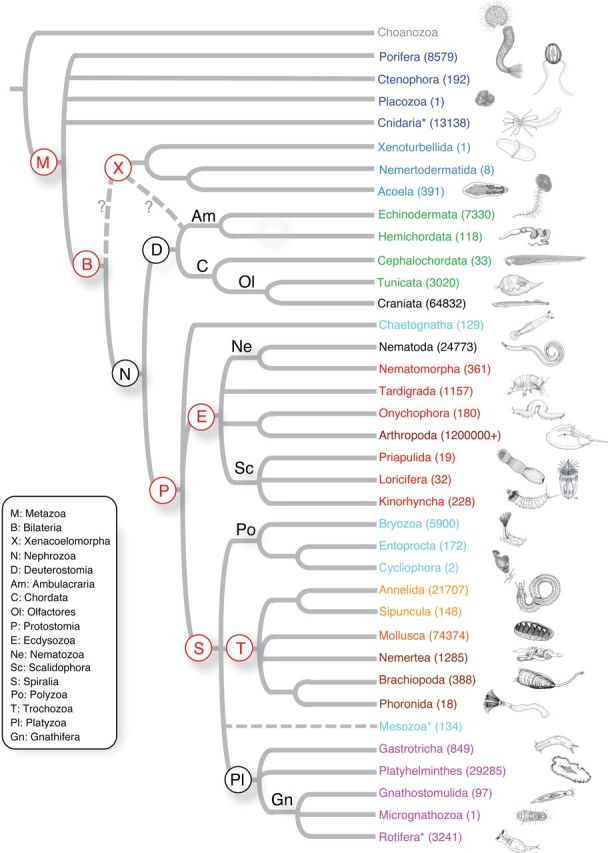Figure 1.

Metazoan relationships. This phylogeny of Metazoa is largely based on recent phylogenomic analyses by Dunn et al. (2008) and Hejnol et al. (2009). The basal nodes of the tree are shown as a polytomy based on varying results in recent analyses (Dunn et al. 2008; Hejnol et al. 2009; Philippe et al. 2009; Schierwater et al. 2009; Pick et al. 2010; Ryan et al. 2010; Nosenko et al. 2013). The position of Xenacoelomorpha is uncertain (dashed lines) and is based on recent studies; it could be the sister group to Bilateria (Hejnol et al. 2009), or as part of Deuterostomia (Philippe et al. 2011). There is no phylogenomic data for Mesozoa or Micrognathozoa, and their positions are based on a limited amount of direct sequencing data. Mesozoa (comprising Rhombozoa and Orthonectida) is shown as a single terminal but may not be a clade. The placement of Phoronida is based in the traditional placement of the group as close to Brachiopoda. The estimated numbers for extant described and valid species, indicated in parentheses after the terminal name, are from Zhang (2011a) and for marine groups, from queries of the World Register of Marine Species (June 2013), http://www.marinespecies.org/aphia.php?p=stats. Notes for terminals indicated by *; Mesozoa (comprising Rhombozoa and Orthonectida) is shown as a single terminal but may not be a clade. The species count for Rotifera includes Acanthocephala and for Cnidaria includes Myxozoa.
